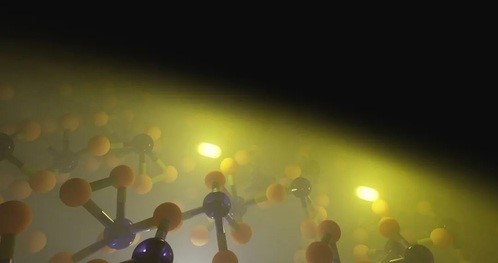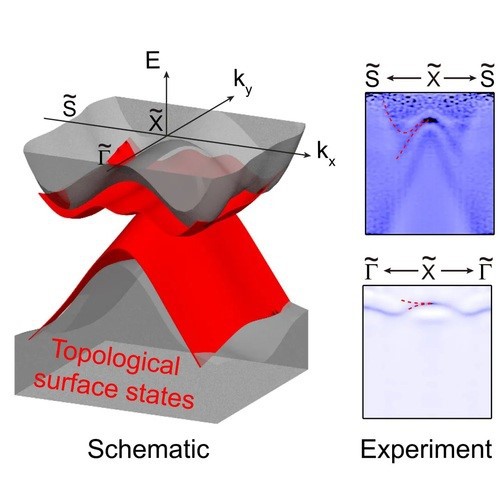Recently, a breakthrough has been made in the research of topological superconductivity candidate material by Professor Yulin Chen-Zhongkai Liu group and collaborators. Both nontrivial topological surface states and bulk superconductivity have been directly observed in a quasi-1D material, TaSe3, suggesting a new research platform in the study of the topological superconductivity. The research work, with the title “Observation of topological electronic structure in quasi-1D superconductor TaSe3”, has been published online in Matter.
Topological quantum material has been one of the hottest research topics in condensed matter physics. Certain types of the materials could be classified to be topologically nontrivial according to their special topological electronic properties, e.g. topological insulator, topological semimetals, topological superconductors. Unique behaviours often arise in these materials, for example the dispassion-less conductivity channel on the edge of a topological insulator (while the bulk keeps insulating), which could be used in the fabrication of future high efficiency electronic devices. Topological superconductors, on the other hand, are predicted to host exotic emergent particles such as Majorana bound states, having considerable application potentials in fault-tolerant quantum computation.
Despite the great interest in both fundamental research and industry application, up to date, only very few materials are experimentally verified as candidates of topological superconductors (e.g. doped topological insulator CuxBi2Se3 and iron-based superconductor FeTe0.55Se0.45). Searching for new material system is always the focus in this intriguing field.
Professor Yulin Chen-Zhongkai Liu group in SPST, has been playing an active role in the research of topological quantum materials. Based on the previous experience on the study and manipulation of topological Dirac/Weyl semimetals (Nature Materials, 2015; Science,2019; Nature Communications,2019) and discovery of new topological insulators (Nature Communications, 2016), the group focus on the investigation of potential topological superconductor candidates. Combining the use of synchrotron-, laser-based Angle resolved photoemission spectroscopy (ARPES), scanning tunnelling microscopy (STM), transport measurement and theoretical calculation, they systematically studied the electronic properties of quasi-1D superconductor TaSe3, and proves its topological non-trivial nature. It is worth noting here that the laser-ARPES system based in ShanghaiTech plays a determining role in the research by directly observing the non-trivial topological surface states with very high momentum and energy resolution. The work suggests TaSe3 to be a promising new candidate of topological superconductors. Unlike other existing candidates, the simultaneously combination of stoichiometric, exfoliable, and air-stable properties in TaSe3 makes it an ideal platform for both fundamental studies and further applications.
ShanghaiTech University is the first affiliation. The work is collaborated with Nanjing University, Tsinghua University, Chinese Academy of Science, Diamond Light Source (UK), Advanced Light Source (USA), Stanford Synchrotron Radiation Lightsource(USA), Elettra synchrotron (Italy) and University of Oxford (UK). Postdoc Cheng chen, Aiji Liang and graduate student Shuai Liu are the co-first authors of the work. Research associate Dr. Meixiao Wang, Prof. ZhongKai Liu and Prof. Yulin Chen are the co-corresponding authors. Prof. Yanfeng Guo, Prof. Yanpeng Qi from School of Physical Science and Technology and Prof. Xufeng Kou from School of Information Science and Technology of ShanghaiTech also participated in the work. The work is supported by the start-up fund of ShanghaiTech University, the National Natural Science Foundation of China, National Key R&D program of China and ShanghaiTech Laboratory for Topological Physics,

Fig1. Art work illustrating topological superconductivity on the surface of TaSe3

Fig2. Schematic and experimental result of topological surface states in the TaSe3


